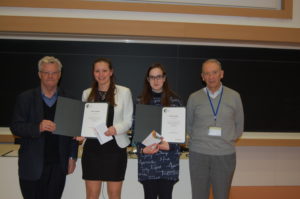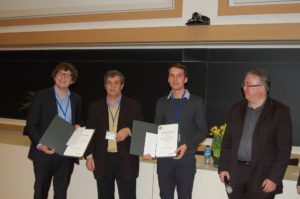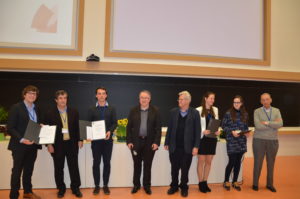The “3rd International Green Catalysis Symposium 2017” took place on 23rd-24th March at the University of Rennes. Green Chemistry and Catalysis Science & Technology sponsored poster prizes; Green Chemistry Advisory Board member and chairman of the symposium Professor Pierre Dixneuf (Rennes, France) and Professor Luis Oro (Zaragona, Spain) awarded the Green Chemistry prizes and the Catalysis Science & Technology prizes were presented by Christian Bruneau (Rennes, France).
The Green Chemistry prizes were awarded to Rebeca Gonzales-Fernandez (University of Oviedo, Spain) for her poster entitled “Ruthenium-catalyzed hydration/transfer hydrogenation of beta-ketonitriles: easy access to beta-hydroxyamides” and Carolien Vis (University of Utrecht, The Netherlands for her poster, “Tandem catalytic biomass conversion in Pickering emulsions”.
The Catalysis Science & Technology prizes were awarded to Benjamin G. Schieweck (RWTH Aachen University), for his poster entitled “Highly active nickel catalyst for the hydrogenation of carbon dioxide to formate” and Antoine Bruneau-Voisine (University of Rennes), for his work on “Uses of well-defined manganese catalysts in homogeneous hydrogenation and methylation”.
Congratulations!
More information about the event can be seen on https://igcs2017.sciencesconf.org/
















